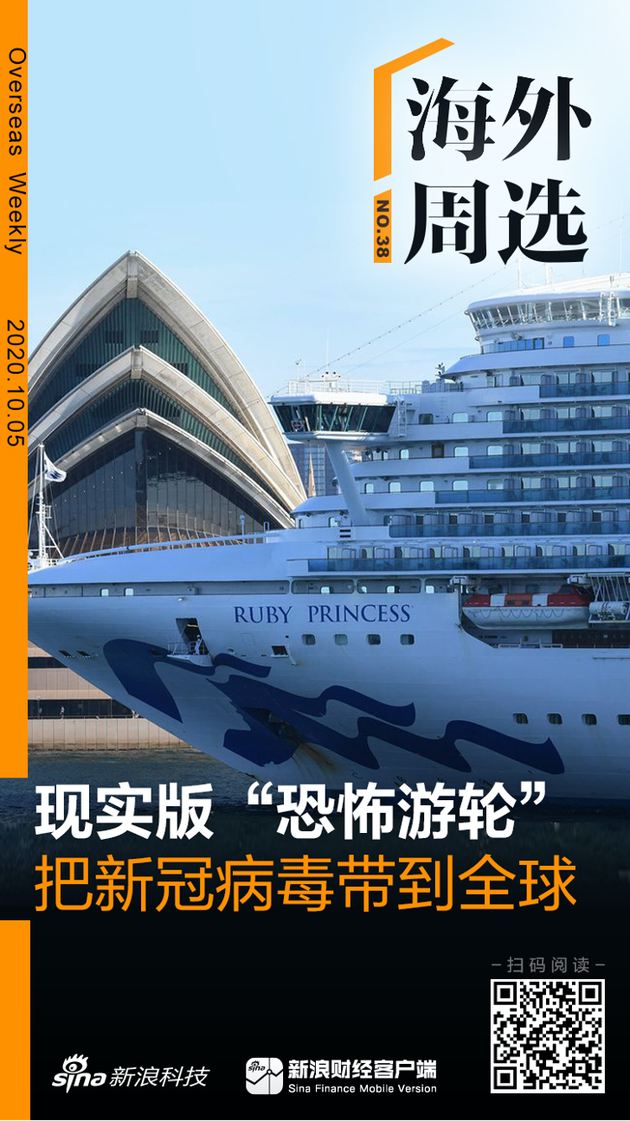How on earth were hundreds of passengers infected with the virus allowed to disembark from Sydney and return to Florida from Tasmania?
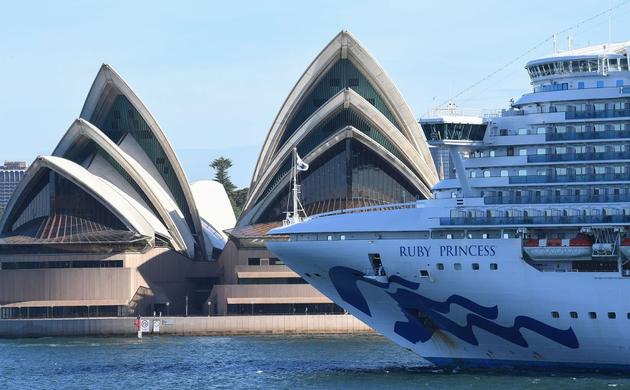 (Figure 1: After the passengers disembarked, the Ruby Princess left Sydney on March 19.)
(Figure 1: After the passengers disembarked, the Ruby Princess left Sydney on March 19.) At about 6:00 a.m. on March 19, William White, a retired Australian mortgage broker, woke up feeling slightly ill. He has a cough and a runny nose, but it doesn't look very serious. However, there is no time to stay in bed now. White and his wife Lucia have just finished their ten day cruise to New Zealand, and now the cruise is docked in Sydney. This is caused by carnival corporation The Princess Cruises, a 950 foot cruise ship with 1542 cabins, is called the "Ruby Princess". The departure time of Mr. and Mrs. White is 8:05 a.m. Therefore, they quickly packed their bags, had breakfast, and then came to the Explorer Bar on time to wait for the tourists who left the ship at the same time to get together and get off the ship together.
Cruise ship unloading is a complex process, and delays are also common. But the Whites waited only a moment and were told they could leave. They crossed the corridor, and the passing crew waved and clapped goodbye to them. It only took a few minutes to pass through Sydney's overseas passenger terminal. Although the COVID-19 pandemic has accelerated its spread, Australian officials have allowed passengers aboard the Ruby Princess to disembark without restrictions. The passengers coming down do not need to show their passports, let alone take their temperature. The only document required is the entry form. The border staff just glanced at the form and let the passengers pass.
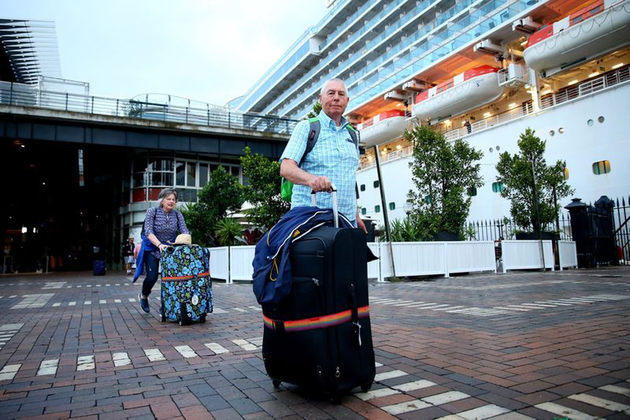 (Picture 2: Passengers leave the cruise ship Ruby Princess in Sydney.)
(Picture 2: Passengers leave the cruise ship Ruby Princess in Sydney.) 8: At 30, Mr. and Mrs. White were already walking on Sydney Avenue. More than 2600 other passengers have already scattered around, some taking taxis, some taking commuter trains, and some getting on crowded airport buses. "I often travel abroad by plane and cruise ship," White said in a statement to investigators later, "but I have never experienced such a short journey."
Terrorist Cruise
The decision to allow the Ruby Princess to dock in Sydney will have a profound impact. Facts have proved that this ship is the most important carrier of Australian coronavirus, which once accounted for more than 10% of the confirmed cases in the country. In Tasmania, two cruise passengers may have caused a serious outbreak of the disease, resulting in the closure of a large hospital. Other infected passengers flew to the United States, and some even died. At the same time, the crew members on the ship were trapped on the Ruby Princess, like prisoners, some of whom were even difficult to return home for months.
Although many cruise ships had a large number of confirmed cases at the beginning of the epidemic, the Ruby Princess was very different. Not only did 28 people on board die of COVID-19 - the most of all cruise ships. The other two infamous carnival cruise ships, the Diamond Princess, which was closed at the Japanese dock for several weeks, and the Zandan, which had no choice but to wander on the west coast of South America to find a country to allow it to dock, never let passengers off the ship. But the Ruby Princess was just the opposite. Only when passengers landed did people realize that this was an incubator for devastating outbreaks.
In an email statement, the Ruby Princess said: "Our highest responsibility and our first task is always the safety, health and well-being of guests, crew and community members wherever they go", and fully complied with the public health guidelines during the journey. "After the global health agencies provide new information, we will constantly update and adjust our policies and agreements to reflect the latest developments related to the COVID-19 epidemic." When the Ruby Princess first set sail, the company said: "At that time, there was no spread of coronavirus in the Australian community."
After the cruise ship docked, the situation changed dramatically. At that time, with its isolated geographical location and sound medical system, Australia seemed ready to escape the worst pandemic. The subsequent fiasco prompted the government to take a series of efforts to find out where the problem lies and who should be held accountable. The New South Wales government organized a high-profile public investigation, and the police also carried out the investigation under the leadership of the murder detectives. One lawsuit after another. Everyone is trying to answer a core question: how did hundreds of infected passengers get off the cruise ship and head to the center of Sydney when governments around the world are extremely vigilant?
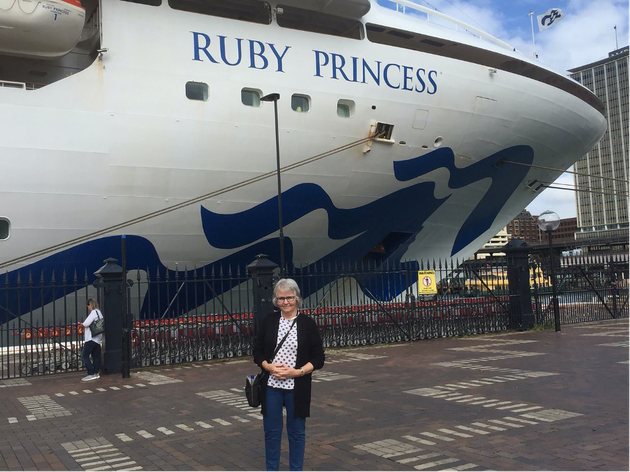 (Figure 3: The group photo of Rossi Kiel and the Ruby official account.)
(Figure 3: The group photo of Rossi Kiel and the Ruby official account.) Early return to port
The Circular Wharf is probably the best place in the world to start a sea trip. Located at the foot of the Sydney Financial District, on one side is the Rock Cultural Area, one of the earliest European settlements in the continent. In addition, there are the soaring arches of the Harbour Bridge and the famous Sydney Opera House that seems to be about to set sail.
On March 8, thousands of passengers boarded the Ruby Princess from the cruise ship port of the Circular Wharf. The increasingly serious COVID-19 epidemic did not seem to stop the enthusiasm of passengers. Although Australians are also panicking - hand sanitizer and canned food in Sydney shops are beginning to sell out, and people from China, Iran and South Korea are also prohibited from entering the country, the number of confirmed cases in Australia is still quite small. In New Zealand, the destination of the 13 day cruise, fewer people were diagnosed.
Stephen and Rossi Kiel are two retirees from Tasmania. They arrived at the port at 12:30 p.m. and planned to celebrate Rossi's seventieth birthday with a sea trip. Shortly after arriving at the terminal, the Ruby Princess announced that boarding would be postponed to late afternoon. "Then we went to the Circular Wharf and found a good bar," Stephen recalled. "Then we talked about the virus. Unfortunately, we always thought, 'This will not happen to us, and the infection rate is not high.'" Rossi stood in front of the cruise ship and took a picture; Stephen wants to edit the name of the ship and change it to "Princess Rossi".
What they did not know was that in the early morning of that day, after the cruise ship returned from the last voyage, a government epidemiologist named Kelly Anne Ressler and seven other staff members had boarded the ship. They carry suitcases full of masks, gloves and test swabs. NSW Health hopes to screen those arriving passengers who may be carrying COVID-19, whether because they have reported respiratory symptoms or have recently been to an epidemic country. Resler was shocked by the number of people gathered in the restaurant - more than 300 people in total. She and her team distributed masks, measured body temperature, and asked everyone about their travel history. They decided to test nine people for viruses and then let the others off the ship. A doctor told the crew that new passengers should not be allowed to board the ship until the results were obtained.
At 5:30 p.m., the test results came out: all were negative. The Ruby Princess could set off for the next voyage. Boarding began. The cruise ship left the berth in the middle of the night, drove slowly past the Opera House and left the port. Some guests watched the lights of the city disappear from the balcony.
Diane Fish, a travel agent from Della Beach, Florida, could have had a good night's sleep on her way to New Zealand in the next two days. Since late February, she has been on the road, leading a group of tourists to Australia. But the boat tour is also a part of the trip, so she had to shoulder the responsibility of tour guide and social director again, check the entertainment activities on the boat, and ensure that everyone had fun.
There is more and more bad news from overseas. Italy has implemented a nationwide blockade since March 9, and soon President Trump issued an unprecedented ban on people from Europe entering the United States. Fish is not so nervous, and feels far away from all this. "We didn't realize that we were not safe anywhere," she said. But she still asked a colleague to get ready and help her rearrange the itinerary of the tour group if the cruise stopped in New Zealand.
On the way across the Tasman Sea, there are many activities for passengers to enjoy. The Ruby Princess was launched in 2008. Although it is not the latest or largest cruise ship of the Princess Cruise Line, it is still very spectacular. Ruby Princess has 19 decks, 4 swimming pools, and dozens of restaurants and entertainment places, most of which are around the atrium known as "Piazza". The captain of the Ruby Princess was an Italian named Giorgio Pomata.
After arriving in New Zealand, the cruise ship first passes the southwest end of the fjord area of Fiodeland, and then stops at Dunedin. The Ruby Princess headed north, and the last stop was Island Bay, which was scheduled to arrive on March 18.
On March 15, the cruise ship stopped at Napier, which is located at the border of the wine town on the North Island. Crowds of tourists swarmed into the town, walked into the souvenir shop and took the tourist bus. On the same day, Australian Prime Minister Scott Morrison announced that his country was stepping up efforts to control coronavirus. Everyone, no matter where they come from, as long as they come from overseas, needs to be isolated for 14 days after arriving. From midnight, cruise ships coming from foreign ports will be prohibited from docking.
At the regional office of Carnival, no one knows what this announcement means for the Ruby Princess ships, which carry a large number of Australian passengers. But that night, the public address system of the Ruby Princess announced that the cruise ship would return to Sydney directly.
Stephen Keele, an old sailor, has been tracking the journey of the Ruby Princess on the Internet. He soon found that the bridge crew was accelerating to sail to New Zealand at 24 knots or 25 knots instead of 18 knots. After the Diamond Princess, the managers of the Carnival Company are very clear about what delay means to the cruise ship. "We don't want you stranded anywhere or protested at the port," an executive in Sydney wrote to Captain Pomata.
At the same time, the passenger experience remains basically unchanged. Apart from China, social alienation is still a relatively new concept, and restaurants, bars and other entertainment places on the ship are still open normally. Moreover, the crowded St. Patrick's Day celebration went on as usual.
Three cases confirmed
In Sydney, officials are evaluating whether and how to dock the Ruby Princess. The criteria for the state government to determine whether a cruise ship carries a virus are based on the travel history of the passengers on board, the current travel location and, most importantly, how many of them have reported "influenza like illness" (ILI) - generally understood as fever or respiratory symptoms. If the number of reported passengers exceeds 1% of the total number of passengers and crew, and the influenza virus test on the ship can prove that the symptoms are not caused by influenza virus, the ship will be considered to be at high risk, and everyone needs to stay on the ship until the test swab can be tested in the land laboratory. The Ruby Princess docked at a moderate risk on March 8, partly because some tourists had been to Singapore. However, passengers can get off the ship normally if the risk of landing is low.
On the morning of March 18, the day before the Ruby Princess was about to arrive, the government epidemiologist Ressler copied an email from the cruise ship's senior doctor Von Wazdorf. The email answered a series of questions about the passenger's travel history and condition, and pointed out that the medical staff had collected swabs for "a few individuals with fever symptoms but negative flu detection". Von Wazdorf also attached the required form, listing the names, conditions and temperature of passengers with flu symptoms.
But Resler is not the master of how to deal with the Ruby Princess. It is the independent public health expert group that makes the decision. They don't think this number is alarming. Many patients go to the clinic on the way home, but this may also be because the announcement reminds passengers to go to the clinic in time if they have cough or other respiratory problems, because the virus is spreading. No passengers have recently visited countries with high risk, and the proportion of ILI is slightly less than 1%, but quite a few people have tested positive for influenza. Subsequently, the Panel considered the Ruby Princess as a low risk, but suggested that some passengers with symptoms should be tested for COVID-19 just in case.
On the boat, things became more and more strange. When the cruise ship was nearing the shore, Percy Anderson, a 75 year old man from Queensland, walked into the elevator and found a strong man in a hoodie. The clothes were tightly zipped up, blocking his mouth and nose. The woman with him also wore surgical masks, and both seemed to have difficulty breathing. Anderson later told investigators that he and his wife Esther "exchanged glances, but said nothing". Another passenger, Paul Reed, recalled that he went to the clinic because of cough and sore throat. He said that the doctor wiped his nose and immediately told him that "you are not infected with coronavirus". Reed thought that this meant that his coronavirus test was negative, but actually the medical team on board did not have the ability to do virus testing.
Fish still hopes to relax. She booked a spa treatment and planned to enjoy it when she returned to Florida. After that, she felt something was wrong - her muscles were sore, she was weak, and she "didn't want to get out of bed the next day". She thought it was because she was too tired to travel.
Later on March 18, the VTS, the office responsible for managing Sydney port traffic, received a call. The other side is from the national ambulance service, and asked for the latest information about the Ruby Princess. Cameron Bouchart, a port manager, thought there was something wrong with the phone. When the cruise ship docks, in order to prevent the elderly from sudden discomfort, ambulances are usually sent to the port, but generally no notice will be given in advance. So Bouchart called back to learn more. "We received a reservation from Carnival Australia for two ambulances for the cruise ship arriving at 2:30 p.m., and there were two suspected COVID-19 patients on board," the ambulance coordinator told him, "We want to know whether this ship will really enter the port and whether passengers can leave the ship." The ambulance official said that they tried to contact Carnival, but did not respond.
While alert, Bouchart hung up the phone and began to contact the carnival company. But no one answered. He emailed his colleague and told him to stop the Ruby Princess from landing. "Tell the cruise ship that their landing has been refused," he wrote, "and ask their agent contact person to contact the Sydney Shipping Service Office immediately."
The port staff finally contacted the carnival staff. According to the investigation documents, carnival staff said that they did call two ambulances for a passenger with serious leg disease and another passenger with heart disease, but not because of suspected coronavirus infection. In view of this and the decision of the health authorities, the port authorities agreed to allow the Ruby Princess to dock. At 2:30 a.m., the cruise ship docked at the ring dock. Passengers will leave the ship one after another in the morning.
By 9:00 a.m., the sidewalk outside the terminal was full of passengers who had just disembarked. Anderson and his wife had to catch a flight back to Brisbane that day, so they got on a bus to Sydney Airport. When waiting in line, they found a commotion behind them: a woman fell to the ground. Anderson immediately recognized her and the man kneeling beside her. He saw the couple breathing slightly hard in the elevator of the cruise ship. The medical staff soon appeared with stretchers.
Fish and other passengers boarded the bus to the airport. "I sat down and left some room," she said. "Then I heard the lady in front coughing. Two seconds later, the man behind also coughed. Then the man on my right began to cough. I told my husband, 'Everyone in this car is sick.'"
At the same time, Ressler was waiting for the virus test results of the Ruby Princess, although most of the passengers on the ship had scattered. In the afternoon, she logged into the website of the laboratory to check whether the test results came out. But not at all. Even the samples are not registered in the system. She called the laboratory and the other party said that they would test as soon as possible.
The next morning, she logged on the website again and saw that three swabs were positive. One swab came from the crew on board. Another passenger from Tasmania. The third one came from a woman named Leslie Bacon, who was taken away by an ambulance with leg disease. (Von Wazdorf once told the health department that both passengers had respiratory symptoms.)
It's too late
The Ruby Princess is not a low risk at all, but Resler knew it too late. The state government hastily deployed contact tracking personnel, and government officials began to hold teleconferences to try to find out which link went wrong. But time is running out.
At the end of that day, Resler found a strange thing: some people who were tested for coronavirus were not on the list of passengers and staff with symptoms sent on March 18. By this time, four people had tested positive. Resler contacted Von Wazdorf and asked: "Do you have an updated ARI list?" (ARI: acute respiratory disease) "Some people who have been tested are no longer on the list I got. After sending the list, have you added any new patients?"
Six minutes later, Von Wazdorf sent a reply. "I'll send it to you right now. I'm sorry, the latest list was on the last morning, but I forgot. It's crazy." The number of people on the updated list has not increased significantly, but this change is very critical: the updated ILI ratio has reached 1.3%, exceeding the threshold of 1%, which implies a higher risk. The Ruby Princess also updated the sick information of passengers on another government platform until the early morning of March 18. But Resler later testified that she was not aware of these data.
"I have been asking myself whether I can better protect everyone if I do more," Von Wazdorf told Ressler that night.
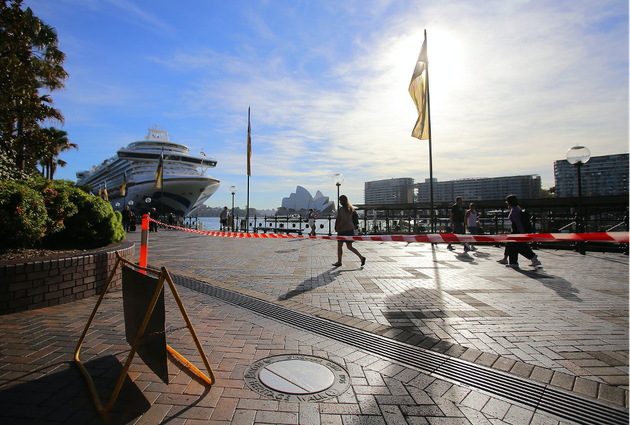 (Figure 4: The Ruby Princess docked at the Circular Wharf on March 19.)
(Figure 4: The Ruby Princess docked at the Circular Wharf on March 19.) The passengers on the ship were scattered in Australia and around the world, and some people caught the last flight before the international border was closed. The carnival company provided the government officials with a list of passenger contact information, but the details were not accurate. Some passengers don't answer the phone at all. By March 20, only 44 international tourists had been contacted by the tracking personnel, and 526 international tourists had not heard from. That weekend, Qantas reported that 170 "close contacts from the Ruby Princess" flew to the United States on March 21. The government is one step too late. The next night, the Australian Border Agency will list the passengers on the Ruby Princess on a special list - when checking in, it will issue a "no boarding" reminder.
On March 19, when he boarded the flight to the United States, Fish did not know about the confirmed case. When she changed planes in San Francisco, she realized that the situation had changed. Some people in her group received contact tracking calls. It happened that she began to feel uncomfortable, very uncomfortable. The airport was almost empty. She found an empty bench and was ready to lie down and sleep for a while. "I knew I was running a fever, so I sat in a place far away from people, and I wanted to have a test as soon as possible," she said.
When he got home, Fish slept for 12 hours. When she woke up, she found an emergency care center nearby that could be tested. The test result confirmed her suspicion: positive. Her husband is also positive.
Confirmed cases from the Ruby Princess have also emerged in Australia. White, a former mortgage broker, thought he just had a cold when he returned to his home in the south of Sydney. Two days later, a friend who was also on the same cruise ship called to say that her husband had been sent to the hospital due to complications of COVID-19. Later, the Whites also went for tests, and they were all positive. Now, they have recovered.
Two other passengers, 72 year old Vietnam veteran Graham Lake and his wife Carla, were isolated from their homes near Brisbane. On March 20, they heard that someone on board was diagnosed. Although there were no special symptoms, the couple went to the hospital for testing. The doctor didn't test Rick because he had no symptoms; But his wife stayed in the hospital waiting for the test results because of dry cough and fever.
The next morning, Carla called her husband and told him that she had been diagnosed. Soon, Rick himself felt uncomfortable. A week later, an ambulance took Lecla to the hospital. He was also diagnosed. He was sent to a ward with his wife. Before long, Carla was in the intensive care unit. Rick was also beside her. In the early morning of March 29, he found that Carla had lost her breath. He stood in front of his wife's hospital bed for a while, then returned to his own hospital bed, not knowing what to do next. "I watched my wife die, but I couldn't do anything," he said.
In Hobart, Tasmanian retiree Kiel also tested positive for the virus. One day after returning home, he was sent to the hospital and the intensive care unit.
In Hobart, Tasmanian retiree Kiel also tested positive for the virus. One day after returning home, he was sent to the hospital and the intensive care unit. His wife Rosie and daughter almost thought that he was no good, so they went to the hospital wearing protective clothing to see him "last time". Fortunately, 11 days later, Kiel finally recovered. A few months later, he still felt weak. "Of the six people who went with me, I felt that I was the one with the best health," he said. "But it turned out that I was ill."
Five star mobile prison
On the Ruby Princess, only a group of people were considered potential carriers of the virus from the beginning. That's more than 1000 workers on board. Most of them came from Indonesia, the Philippines and other countries. They were not allowed to disembark in Sydney, but were required to return to the port of departure. But for a company as complicated as Carnival in finance, this is difficult. The nominal home port of the Ruby Princess is Bermuda. At present, the crew can only stay on the ship until the company is not sure where the ship can go.
After the passengers left, the crew began their own carnival. On the evening of March 19, they held a "sailing party" by the swimming pool. But the next departure is a voyage without destination. The medical staff on board found that more and more people had respiratory symptoms. A Philippine crew member who asked not to be named said that more and more colleagues were sent to the cabin for isolation. Only seriously ill people are allowed to return to Sydney for treatment.
With opposition politicians and trade unions becoming more and more upset about the situation on the Ruby Princess, Australian officials finally allowed the cruise ship to dock at the beginning of April - but not at the ring dock. The cruise ship finally docked at the remote port of Kambra. There, cruise ships really become "a five-star mobile prison". Almost all people can only move in their dormitories and are only allowed to open the door to receive food or receive treatment. Police and soldiers were stationed at the dock.
The state government is eager to solve this problem. However, it is obviously unreasonable to let ships full of COVID-19 patients continue to wander on the sea. By the middle of April, more than 10% of the crew had been diagnosed. It was not until the end of April that people came up with a solution. Everyone on board is tested for virus, and those who are negative can leave by plane.
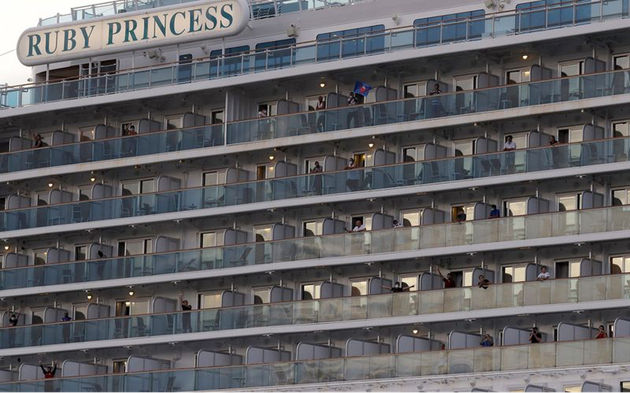 (Picture 5: On April 23, the Ruby Princess left Kambra Port.)
(Picture 5: On April 23, the Ruby Princess left Kambra Port.) Crew members from poorer countries are in a more difficult situation. Although compassionate organizations believe that Australia should help them return, there are still more than 500 sailors from developing countries (whose ability to organize repatriation is limited) stranded on the Ruby Princess and sailed all the way to Manila, the capital of the Philippines. Filipino crew members were relatively lucky to get the following ship on April 23; After two weeks at sea in the Philippines, other crew members still have to wait several weeks before being allowed to go ashore.
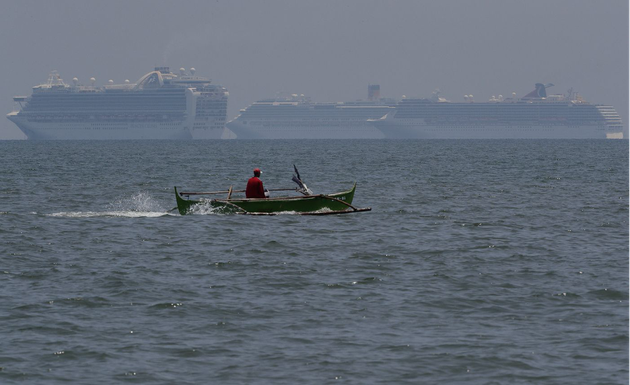 (Picture 6: Ruby Princess (left), docked with other ships in Manila Bay, May 7.)
(Picture 6: Ruby Princess (left), docked with other ships in Manila Bay, May 7.) Now, the Ruby Princess docks near the Malaysian coast. It is unclear whether anyone will take responsibility for what happened on board. Overall, at least 663 passengers and 191 crew members were infected with COVID-19. Of the 28 dead, 20 were in Australia and 8 in the United States - twice as many as on the Diamond Princess. Therefore, a "most deadly sea epidemic" was brewing on the Ruby Princess.
Disasters from heaven
The NSW Police Department is still conducting a long-term investigation, while litigation in Australia and California is still at an early stage. The public investigation led by famous Sydney lawyers released their report on August 14. The results of the report show that the medical staff of Carnival Company and the Ruby Princess have complied with the public health requirements. However, the report did suggest that if Von Wazdorf informed the public health officials of the latest number of sick passengers on the ship in time after sending the initial list of patients, the results might be different.
The report made the sharpest criticism of the government's process of allowing the Ruby Princess to dock, calling it a "serious mistake". The report points out that it is "extremely unreasonable" for the government process to regard the cruise ship as low-risk. After the report was released, the Ruby Princess issued a statement expressing "deep condolences" to the dead. Chen, the governor of New South Wales, hopes to make an unreserved apology for the health workers' "mistakes".
The northwest of Tasmania, which suffered the most tragic consequences, is relatively backward in economy. Soon after the cruise ship arrived in Sydney, the first sick passenger from the Ruby Princess was sent to the Northwest Regional Hospital (NWRH) in Bernie Town. A week later, another patient was admitted. At the beginning of April, the national health department found that one or two of the two patients were very likely the original carriers, which led to the rapid spread of the virus in hospitals. On April 12, the Tasmanian government announced that the hospital was closed, requiring employees and their families to be isolated immediately for 14 days. Military doctors had to fly to the area to deal with emergencies. Eventually, 138 people in this area were infected, 10 of whom died.
The cruelty of the epidemic is random. Bill and Adrian Crist have lived in the northwest of the island for more than 40 years. They raised three daughters and lived by the sea, facing the sea. Their home is about an hour's drive from Bernie Town.
At the beginning of April, Bill told his wife that he was not feeling well and wanted to go to the hospital. Adrian is responsible for driving. On the way, she asked Bill whether to go left or right - to Bernie Town and NWRH on the left, to the hospital in another town on the right. At last, Bill chose to go to the left because the road was beautiful.
Bill went to the hospital immediately. At first, the hospital "did not take obvious preventive measures", Adrian recalled. A few days later, Bill's condition worsened, and Adrian was told that she had to leave. But Adrian refused.
Bill died on April 10, the day after their 57th wedding anniversary. It was not until the last moment that the doctor told Adrian that Bill was infected with COVID-19. It is almost certain that he was infected with the virus in the hospital - "probably from the second or third transmission of the virus on the Ruby Princess," said Adrian. At first, she did not understand how the virus had spread to her little isolated place. Now, she said, "The virus came from a cruise ship. We have never even been close to a cruise ship."
Author: Jason Scott
https://www.bloomberg.com/news/features/2020-09-15/carnival-s-ruby-princess-cruise-ship-spread-coronavirus-around-the-world?srnd=businessweek -v2
